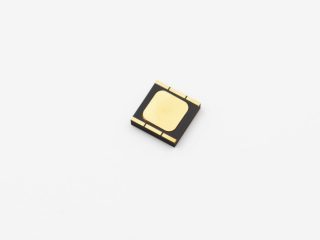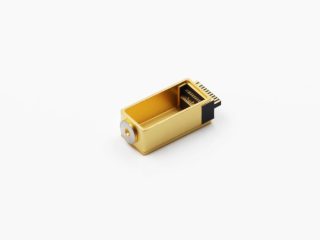
Woven silicon carbide ceramic fibers. Credit: Christian Heiss et al.; MaterialsViews/Wiley.
Textile structures made from silicon carbide fibers are very interesting for manufacturing of fiber reinforced high temperature resistant ceramic matrix composites materials. To produce such textile structures a one or multi-step manufacturing processes like braiding, weaving, warp, or weft knitting is necessary. Depending on the fiber packing density and orientation the fabric structure, the stiffness, deformation, and fracture behavior of the fabric structure vary in a wide range.
In contrast to woven fabrics, which exhibit a low drapability and stretchability in different directions, warp-knitted fabrics are formed by creating loops which give rise for high flexibility and deformability. However, a high Young’s modulus and low deformability of the carbide fibers makes loop formation during knitting difficult. Bending of fibers is also affected by the friction which is caused by ribbing between fibers and the machine parts and by the friction between the fibers inside the roving.
Recently, scientists from the Friedrich-Alexander-University Erlangen-Nuremberg, Germany, demonstrated the manufacturing of knitted fabrics made of silicon carbide ceramic fiber. In an article that appears in Advanced Engineering Materials, “Manufacturing of Silicon Carbide Knit Fabrics” (doi:10.1002/adem.201100192), they show how they derived the critical bending loads from fiber knot and loop testing in order to optimize yarn pretension, working speed, and take up speed during knitting processing. Subsequently, they tested and examined the mechanical behavior of the knit fabric under tensional load.
The investigations show that fiber fracture during knitting can be caused by torsion, bending, or tension. The German researchers considered fiber bending as the critical loading condition imposing boundary condition on the knitting process. Reduction of interfiber friction surface sizing was found to be a critical step in order to produce a continuous knit structure.
The scientists modified the processing conditions for knitting and reduced buckling and friction acting on the silicon carbide ceramic fiber rovings. Using penetrating oil the points of largest friction between fibers and critical knitting elements were lubricated which decreased fiber fracture. Compared to woven silicon carbide fabric structures the knitted fiber perform offers a superior flexibility, wider range of pore size and a higher degree of drapability.
Martin Grolms writes for MaterialsViews, where this post originally appeared.




 Enquiry
Enquiry